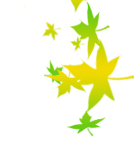NEWS
The English version of the Buila-Vanturarita National Park web page - September 2007
details
CONTACT
Address:
Pietei 7, Horezu Town, Valcea County
Tel.: 0250/860.157
Fax: 0250/860.180
Email:office@buila.ro
|
Flora
The first research on the flora of Buila-Vanturarita Massif, were conducted in 1956 by Alexandru Buia and M. Păun, followed by only a few botanists that have also published partial lists of plants to be found in the Massif.
Flora species Both flora and fauna ecosystems in the Buila-Vânturariţa National Park are very diverse, due to a concourse of factors, as follows:
The mountain relief that covers an important part of the territory, contributing to the conservation of the natural vegetation that, in this areas couldn’t be replaced by the agrarian cultures, because of the bumpy relief of the limestone ridge.
High density of the limestone emerged to the surface, marked in the relief by gorges sections and small isolated massifs with abrupt slopes, horns, cracks, girdle, arid valleys, detrital zones with a very interesting flora.
The relatively mild climate, with Mediterranean influences, that helped the expansion of relatively thermophylle species.
In the mountain relief there is a high diversity of the habitat types (ecological entity indicating the environment of the species, abiotic and biotic at the same time).
These factors in correspondence with the position regarding the genetic centres and the migrating corridors of flora and fauna determined the co-existence of very different elements: Euro Asian, European and central-European, alpine-carpathic, sub Mediterranean, Căpăţânii -Balkanian and a series of endemic sau sub-endemic species.
The dominating elements on the limestones of Buila are mainly Euro Asian (22.6%) that, along with the European ones (13.2%) and the central European ones (11.2%) comprise of half of the total number of species. They are followed by the circumpolar limestones 9.6â„…; balkan-dacic 8.3%; alpine 8.1%; central- alpine 6.8%; endemic 6.8%; continental 4.9%; mediteranean 4.9%; ubiquitous 3.6%.
Disposition of the vegetation In the Buila-Vânturariţa Massif, due to the altitude reaching 1885 m, the flora is disposed on vertical floors, along the altitude and climate range, with defining characteristics for each of these floors.
Deciduous forests level;
- The Beech sub floor.
- The sublevel of beech forests with coniferous trees.
The boreal level (of spruces).
The sub-alpine floor. The stone meadows are dominated by mountain avens (Dryas octopetala). There is also Savin Juniper (Juniperus sabina).
The species in Buila-Vânturariţa Massif are:
Endangered species (E) = sspecies in danger of extinction (endangered) whose survival is not probable if the endangering factors continue to act or whose populations diminished until reaching the critical level (ex. Leontopodium alpinum - the edelweiss);
Vulnerable species (V) = pecies considered as possibly passing to the first category in the close future, if causing factors continue to enact; includes the species with diminishing population because of the overexploitation and of the extensive destruction of habitats or because of other environmental turbulences (ex. Trollius europaeus - Globeflower, Dianthus spiculifolius, Daphne mezereum - mezereon, Daphne blagayana -with white, scented flowers);
Rare species (R) = sspecies with small planetary populations, that are not presently threatened, but which are exposed to high risks because of the limited spreading areas (Viola alpina - alpine violet, Taxus baccata - yew tree, Lilium jankae - mountain lily, Lilium martagon - martagon lily, Centaurea atropurpurea - thistles, Pinus mugo - dwarf mountain pine);
Not threatened species(Nt).
Another category is that of the endemic species: Centaurea pinnafida, Dianthus spiculifolius, Juniperus sabina.
In the Buila-Vânturariţa National Park there are 28 species of orchids (cf. Gh. Popescu, 1974): Epipactis helleborine, E. atrorubens, Gymnadenia conopsea, Orchis mascula, Platanthera bifolia, etc.
From the plants mentioned in the"Red List of Superior Plants from Romania" (M. Oltean and collaborators.), in Buila-Vânturariţa there are: Taxus baccata, Pinus sylvestris, Trollius europaeus, Junipeus sabina, Dianthus spiculifolius, Daphne blagayana, Gentiana lutea.
|
|


